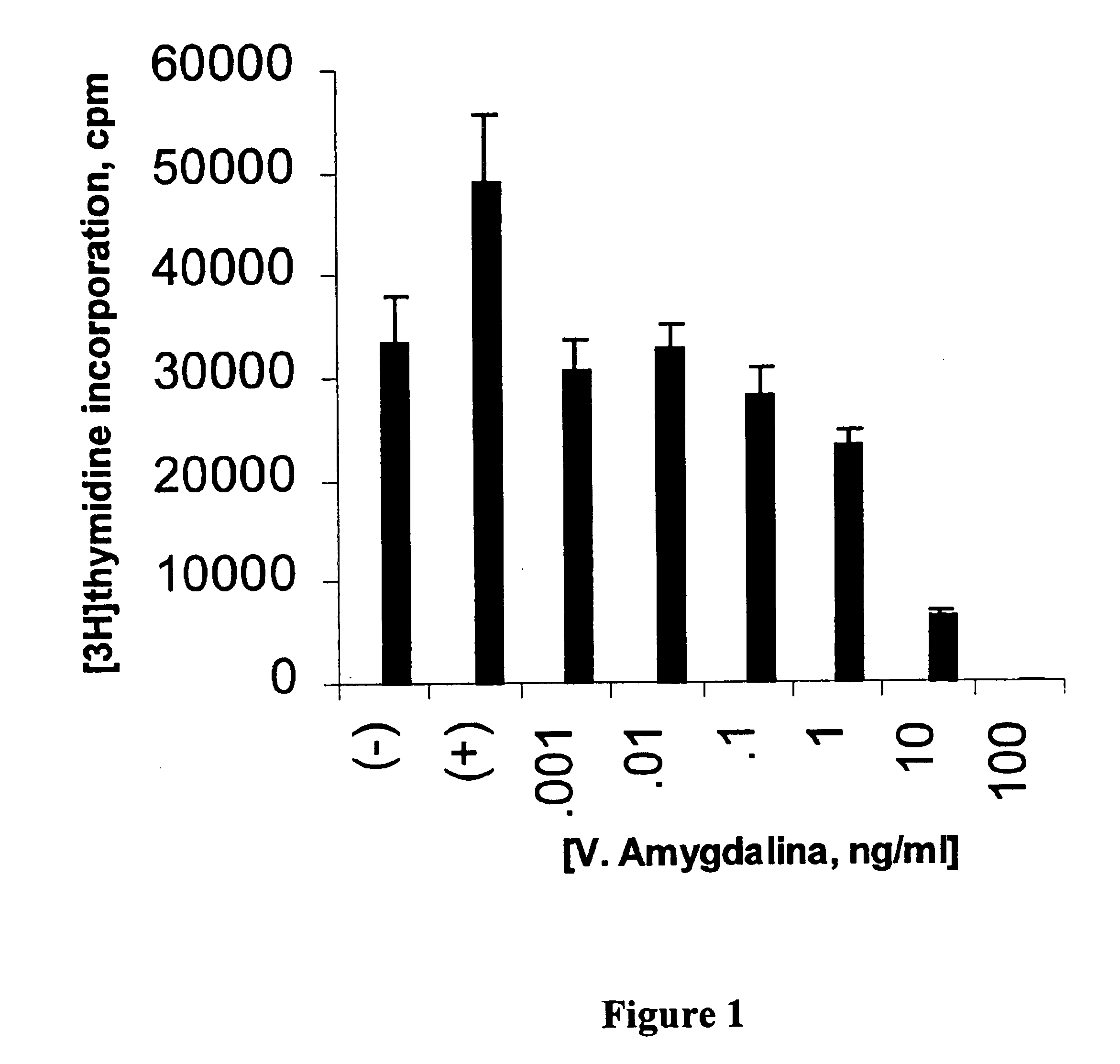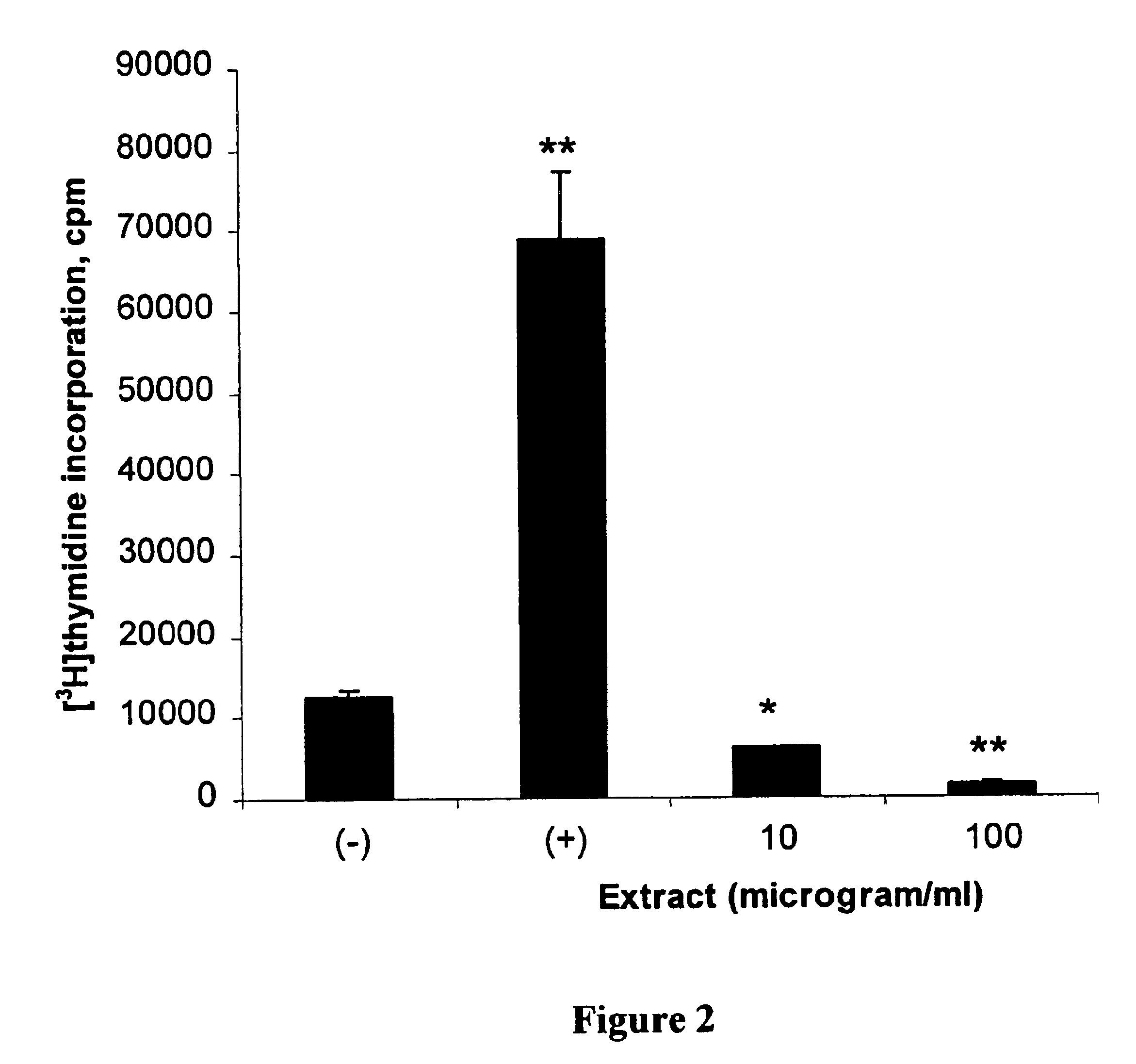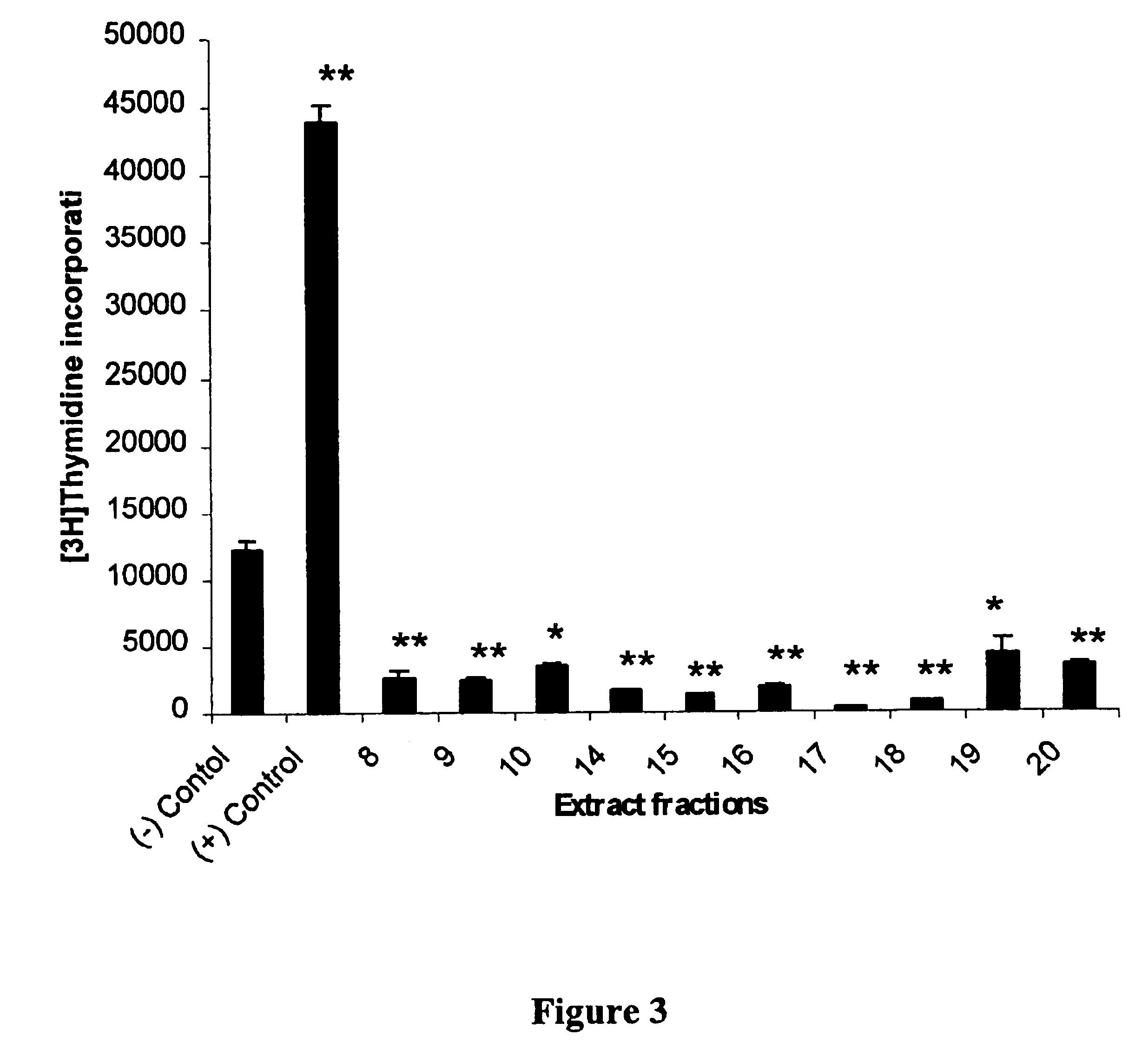Phytochemotherapy for cancer
a cancer and phytochemotherapy technology, applied in the field of neoplastic disease treatment, can solve the problem of no reports of water-extractable vernonia amygdalina
- Summary
- Abstract
- Description
- Claims
- Application Information
AI Technical Summary
Benefits of technology
Problems solved by technology
Method used
Image
Examples
example 1
Aqueous Extraction of Vernonia Amygdalina Leaves
[0055]1. Fresh Vernonia amygdalina leaves were collected in Benin City, Nigeria from pesticide-free plants (it is important to note that the plants investigated in the Kupchan et al. report were collected from east Africa, specifically Ethiopia and thus may represent a Vernonia amygdalina sub-species with properties distinct from employed for use in the instant invention).[0056]2. 18 grams of Vernonia amygdalina leaves were washed three times with distilled water.[0057]3. Next the leaves were soaked overnight (12-18 hours) in 36 mL of distilled water at 4° C.[0058]4. The leaves were then gently smashed (while still in the water), using a mortar and pestle, to prepare a mixture of leaf extract and crushed leaf tissue.[0059]5. The mixture was then filtered through gauze to remove the large particulate matter.[0060]6. An aliquot of the filtered extract was removed and the concentration was determined by measuring its absorption at a wavel...
example 2
Determination of Cell Growth Inhibition by Measurement of Thymidine Incorporation in Cells Treated with Crude Vernonia Amygdalina Leaf Extract
[0062]1. MCF-7 cells (a human cell line derived from an adenocarcinoma of the breast, which may be obtained from American Type Culture Collection (ATCC), Manassas, Va.) were passaged followed by propagation, in RPMI 1640 supplemented with 10% Fetal Bovine Serum (FBS) and a 1% pen / strep / fungisone mixture. The RPMI 1640, FBS, and antimicrobial mixture were all purchased from Gibco BRL (Grand Island, N.Y.). The cells were grown in 35 mm tissue culture dishes (Fisher Scientific, Houston, Tex.) in a humidified incubator at 37° C. under an atmosphere of 95% air and 5% CO2, until the cells reached approximately 40% confluence. Fresh medium was supplied every 48 hours. All other chemicals were obtained from Sigma® Chemical Co. (St. Louis, Mo.).[0063]2. The cells were then washed with serum-free medium and serum starved overnight.[0064]3. The various c...
example 3
Preparative Reverse Phase High-Performance Liquid Chromatography of Crude Vernonia Amygdalina Extract
[0073]1. The water-soluble fraction of V. amydalina (prepared as described in example 1) was lyophilized and then dissolved in 10 ml TRIS-HCl buffer, pH 7.0 (this is a buffer prepared by dissolving the TRIS (Tris[hydroxymethyl]aminomethane) in water and adjusting the pH with hydrochloric acid).[0074]2. 900 ml of ethanol was added and the proteins were precipitated by incubating the solution at −20° C. for 24 hours.[0075]3. The protein pellets were collected by centrifugation at 2500 rpm in a Sorvall® SS-34 rotor in a Sorvall® RC-5B centrifuge (at −20° C. for 35 minutes).[0076]4. The pellets were then washed twice with a methanol:chloroform (9:1) mixture.[0077]5. The pellets were then dissolved in 1 ml of 4 M guanidine HCl.[0078]6. Samples of the protein solution were loaded on a C18 column (25 mm×250 mm, 300 Å, 5 μm, purchased from Vydac Company, Herperia, Calif.) and separated by pr...
PUM
| Property | Measurement | Unit |
|---|---|---|
| Composition | aaaaa | aaaaa |
Abstract
Description
Claims
Application Information
 Login to View More
Login to View More - R&D
- Intellectual Property
- Life Sciences
- Materials
- Tech Scout
- Unparalleled Data Quality
- Higher Quality Content
- 60% Fewer Hallucinations
Browse by: Latest US Patents, China's latest patents, Technical Efficacy Thesaurus, Application Domain, Technology Topic, Popular Technical Reports.
© 2025 PatSnap. All rights reserved.Legal|Privacy policy|Modern Slavery Act Transparency Statement|Sitemap|About US| Contact US: help@patsnap.com



